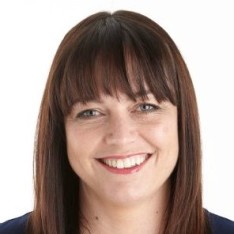Unskilled managers contributing to the lack of diversity in the ad industry argues Paul Fishlock
One of the founders of BMF Paul Fishlock, has argued “training has left agency land” which has resulted in completely unqualified people being left in charge of hiring, contributing to the lack of diversity in the industry.
Speaking on the Question Time panel at the Secrets of Agency Excellence conference the Behaviour Change Partners principal said: “Creative people in particular, if you’re really good at coming up with ideas and making ads maybe you’ll get the tap on the shoulder that says ‘congratulations, you’re now a creative director’ and suddenly you’re in a management role and running a department.
“People who’s only skill, and a very good and valuable skill is coming up with campaign ideas, find themselves running departments and looking at resource utilisation spreadsheets and they’re fucking useless at it.
“Hiring is really difficult. Hiring well is a skill that very few people have completely intuitively. When you have creative people who are suddenly in the position of hiring other creative people for $150k, $200k, and no ones ever told them how to vet applicants and how to conduct an interview. They sit down and go ‘well that was a good chat and he seems to have won lots of prizes, send him the contract’.
“Training has left agency land. I can’t see it coming back but it would be a very good thing if it did.”
Fellow panelist, former Lion and Virgin Mobile CMO Jon Bradshaw argued clients need to care about the makeup of their agencies, saying: “I care because I want different perspectives. My consumer base is 50 per cent male and 50 per cent female and 10 per cent ethnic. I want the perspective from the people solving the problems because that’s the reality of what I’m trying to sell to.
“It’s much better for a creative department to have diversity, not for its social architecture benefits which are significant, but because if you’ve got different people from different backgrounds thinking about the same problem you’re going to have a little bit of tension and friction and that’s a good thing in the creative process.”
For Virginia Hyland, the founder and principal of HM Communication Group, having a diverse teams gives her an edge when pitching against “five white guys”.
“What I’ve made sure is 60 per cent of my executive team are actually from different ethnic backgrounds and they bring a flavour to our client’s business, I know when I’m pitching against five white guys I go ‘fantastic, this is a great day for my agency’ and I embrace it,” she said.
Kevin Macmillan, creative partner and founder of The Works, suggested there needs to more women in leadership positions as a step to solving the diversity issue.
“Is it just more leaders? From a female perspective are there not enough? Maybe we need to have more women in leadership positions and making sure it’s not just blokes running the show.”
The panel also discussed the separation between creative and media and the need for better collaboration between agencies.
Hyland argued the split between creative and media has led to agencies losing their self-belief.
“The reason we’re all splintering now is because creative and media splintered apart but we’ve got half the answer on the media side and the creative guys have the other half of the answer,” she said.
“The reason that we’re all losing our belief is that when a client challenges creative ‘is that going to work?’ you need to be able to tell them the answer.”
Speaking from a marketer perspective Brand Strategy founder Bradshaw echoed the need to bring creative and media back together.
“The problem is now the medium it goes in can change the idea you want and the idea you come up with is fundamentally going to change the medium. That integrated type of thinking is really hard” he said.
“The split of creative and media never had anything to do with what a client wanted in the first place. It was all driven by the agency’s need to create more money and have different competing clients in different parts of the business.
“You never broke it apart because that’s what the client wanted, you did it for you. Put the fucking thing back together again.”
On agencies collaborating Fishlock said the “rules of engagement” need to be clear up front.
“If there’s any sense that there’s a grey area in the middle and there’s even a few dollars that could go one way or the other, it’s going to end in tears,” he said.
“If it’s going to work, somebody whether its on client side or strong agency management from the collaborators have to go ‘right, this is your bit, that’s what you’ll make from it, this is our bit, that’s what we’ll make out of it, nobody’s going to make shit if we don’t work together’.”
However Macmillan expects rostered agencies to continue to compete against each other for work as for the client it can make the work better.
“It’s how it has to be. If I was a client with a budget I’d be thinking ‘how am I going to make the most out of this?’ and I’d probably pit a few agencies against each other because they’d do anything for the work.
“What agencies need to start doing is see it as a positive thing. It’s difficult. I do find agencies whinge and whine too much and aren’t doing a lot about it. The reality is that is is what it is.
“Clients have a problem and as an agency our job is to find a solution not to give them another problem on top of the problem they already have.”
Miranda Ward





 Linkedin
Linkedin
‘Put the fucking thing back together again.’ Sean did. And look how he’s winning.
User ID not verified.
I like this Virgin CMO. No nonsense, get in there attitude is bloody rare at that level
User ID not verified.
Paul hit it on the head.
As an industry we’ve been piss poor at training – and especially mentoring – creatives since the early 90’s when creative and media first went their separate ways.
Jon also hit it on the head.
It wasn’t a client want that caused the split, it was a grab for cash post the early 90’s recession by Finance. And with it went virtually an entire layer of the most senior creatives and mentors (the biggest salaries), pushing everyone in the creative departments up a level without have=ing the experience or mentors to deal with it.
It’s way past time to put the fucking thing back together again!!
User ID not verified.
Promotion beyond ability is a real issue. I met with an agency recently with a very bright young guy who was in client service for a total of 5 years. To retain him they wanted to promote him to GM. The management team had Creative and Adtech backgrounds and were struggling to draw up the job spec of a GM simply from lack of knowledge.
After a chat with the potential GM I found he was very uncomfortable with the expectations that were attached to the title because he simply did not have the business knowledge that clients would reasonably expect from him.
With so many being promoted so early, agencies fail to build a depth of knowledge and experience into teams. The outcome is they have less to offer clients. There are few mentors to guide, train, pull back and push when needed as most of the solid experience has been pushed out of agencies.
One marketer recently described their agency to me as “a bunch of kids playing with their new toys and throwing the occasional tantrum when they didn’t get their way”. And all the spats over diversity haven’t done agencies any favours as they fail to address the elephant in the room with clients.
Clients have very right to expect a range and depth of experience from their agencies. Please don’t bitch about how agencies teams have been cut back because of budgets. Stripping back agency structures to offer even less is not a sustainable solution and is a race to the bottom.
It’s just an excuse for failing to adapt and reconfigure agencies to offer value to clients. Clients will pay for added value but will not pay for delivering less. It simply makes business sense!
User ID not verified.
‘Put the thing back together again’ is not as simple as that.
In ye olden times agencies gave creative away for free and made their 15% commission.Can’t see that coming back any time soon.
The point of breaking up was to get paid for ideas (Gossage, Bernbach et al)
Whatever success agencies who are doing both are having is because they have come up with a better way than either or..
User ID not verified.
Agree with Tony, promotion beyond actual skill set is a massive issue.
In the digital side it’s so common.
Due to massive skill shortage, juniors who are good at their functional roles get promoted to manager roles. Just because they rocked it in their role doesn’t mean they’ll be a great manager. They don’t get any training or support, as a result the people they end up managing leave in droves. Then that person who used to be full of zest and enthusiasm gets burned out and leaves the industry. Talent lost.
What’s the fix? Who knows. Hire people that are smart, have a genuine interest and connection to the industry, can learn fast and are brilliant people managers?
*shrugs*
User ID not verified.
The root cause of the churn factor in the industry is the very thing that the industry delights in celebrating. The industry’s preoccupation with its own cutting edge young fresh image combined with the believe that these are the only people who are in touch and have the skills required to deliver results for clients is a complete falsehood.
As a result their careers as males in creative and the over 70% of women in client service are fast and furious and short lived before they either leave frustrated with their lack of progress and support or are told they are no longer a “good cultural fit”.
There are few mentors to turn to along the way. I’ve sat in both client and agency roles and cringed as they dug holes for themselves in boardroom floors based on bravado and a belief beyond their abilities. I’ve seen them “high five” each other after presentations and then gone back into a boardroom to hear marketing teams real impression of their view of agency teams. Its often not pretty.
We don’t have to rip up the agency model and start again. And re-bundling agencies back together again is also not the answer.
The open market has a huge range of experienced talent across all areas with all the current skills required to act as mentors and provide the in-agency input, training, guidance and encouragement. They also have a depth of experience that clients have lost from agencies. This gap has caused agencies to lose their seat of influence at the clients boardroom table. To use Sean Cummins quote: “Agencies have a seat at the children’s table.”
Initiating a mentoring program within agencies is a first important step in rebuilding confidence in agencies from clients as well the solid confidence and business skills within agency teams.
I’m one of many who are more than ready to contribute.
User ID not verified.